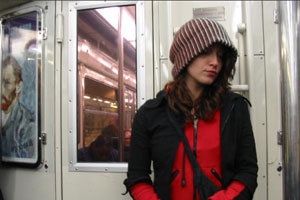
The “Region of the Transborder Trousers” is a graphical design representing the quality of life of the residents of Tijuana and San Diego. Rather than being a political critique showing that the international borders are unsecure and that there are over 100,000 daily crossings, the art focuses simply on aesthetic experience of new innovative technologies. Mark Tribe and Torolab members wore GPS transmitters and for five days, took different routes in their vehicles to and from Tijuana and San Diego. During their experience, they recorded their fuel consumption. Afterwards, they fed all their data into a computer system that analyzed the data and prepared it as an animated map. Each member was a colored dot with a circle around it whose diameter symbolized the fuel in their tank. The dots moved on the map in correspondence to where the members traveled. The map animation was then compressed so that the animation only last eight minutes in duration which is about 900 times faster than what it really took to run the experiment. Again, this artist (Mark Tribe) is an interdisciplinary artist much like Mel Chen. I think the neatest thing about contemporary art is that you have all these new applications for art such to prove ideas or support hypothesis. Even if art is reaching new innovative, theatrical functions, contemporary art still maintains the sense that it is art. Meaning that art still has this creative and ingenious way to capture people’s attention and occupy the human mind in an entertaining sense so that it’s still like traditional art, just transformed. But by giving contemporary art this new twist, or transformation, we value art on so many more levels.










